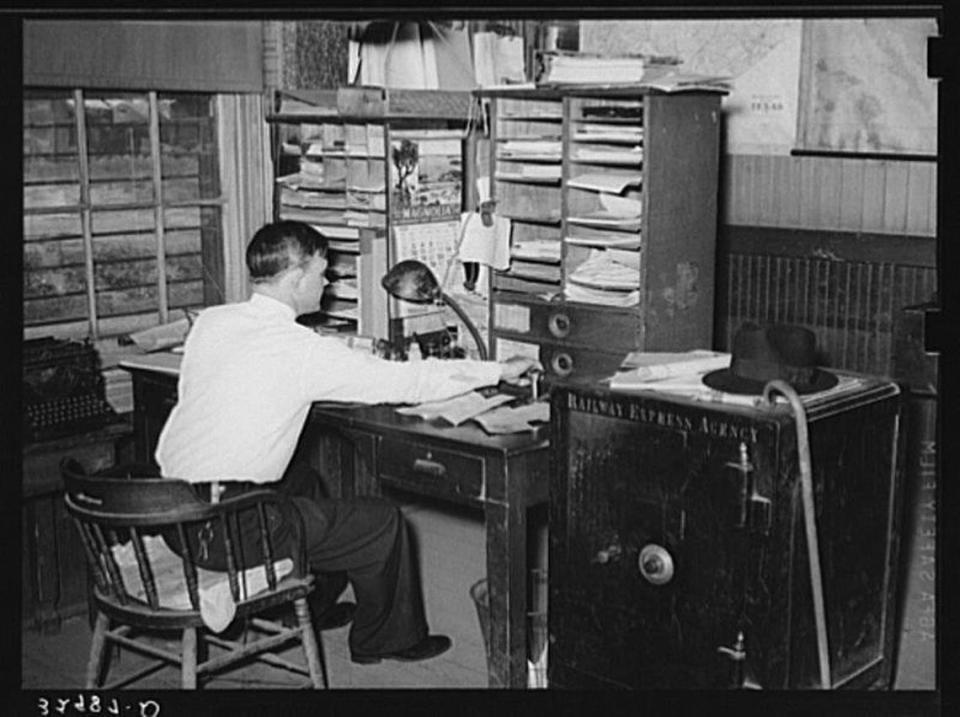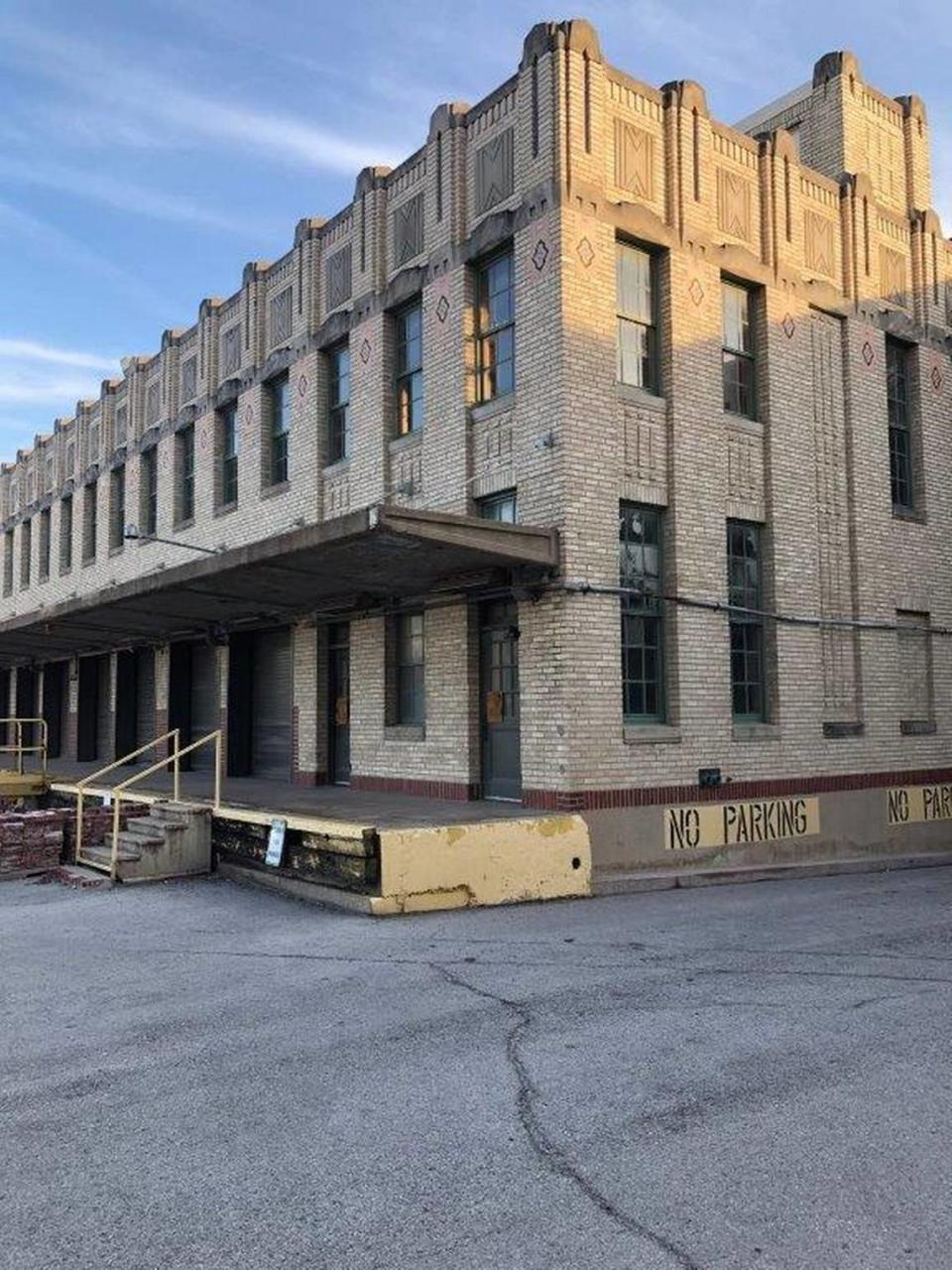50 years after Railway Express closed, its building remains empty in downtown Fort Worth
The next time you hop aboard the Trinity Railway Express for a ride to Fair Park or the American Airlines Center, think about the history behind the venerable name “Railway Express.”
Fort Worth took the name for its commuter rail service to Dallas in 1996. The name had been lying around unused for 20 years at that point. Before there was a FedEx or UPS package delivery, there was the Railway Express Agency (REA). You can see its legacy in Fort Worth when you drive down West Lancaster. That loading dock with its 17 roll-up doors on the west end of the old T&P passenger station was the home of the Railway Express in Fort Worth for 44 years (1931-1975).
The history of package/parcel delivery goes back to the mid-19th century when Wells Fargo started doing business. Other companies, such as Adams Express and Southern Express, followed, providing a service that the U.S. Postal Service didn’t. By 1900, there were four national companies, all of them relying heavily on rail connections to major population centers, then wagon transport from there to small towns. They securely transported small parcels, valuables, and currency. The U.S. Postal Service entered the business in 1913, but it was still fragmented, with too many competitors chasing the customer.
Rail service in Fort Worth was split into freight and passenger business with the two divided, literally, by Main Street. The 1899 red-brick Gothic passenger station was on the east side of Main. The 1902 freight offices were on the west side, stretching down to Front Street, almost to Jennings. The freight depot handled both traditional heavy freight and “light freight” packages.
Fire was an ever-present danger. The passenger station burned down in 1904, and the freight depot suffered the same fate four years later. Both were rebuilt quickly because Fort Worth was a rail hub for both passenger and freight.
World War I changed the business model. In 1917, President Woodrow Wilson nationalized U.S. railroads. Part of the change-over was consolidating seven railway express companies into a single entity, the American Railway Express Agency (AREA), which began operation in July 1918. With the end of the war, railroads and express companies went back to private ownership in March 1920.

Rather than returning to the pre-war situation of cut-throat competition, the express companies continued operating as a single, wholly owned subsidiary of 66 railroads that operated the American Railway Express Agency as part of their passenger service. One sign of the importance of express service was that the express car was always placed right behind the train’s engine. Another sign of the times was that gasoline-powered trucks replaced the horse-drawn wagons that once delivered shipments to smaller towns.
One former competitor that got out of the express business was Wells Fargo, which had started it all. From the 1920s on, Wells Fargo focused on banking and never looked back.
Railway Express Agency is born
In 1929, everything changed again when the American Railway Express Agency reinvented itself as the Railway Express Agency (REA), still co-owned by the railroads. The only thing that changed was the letterhead. To keep up with the times, the new agency added refrigerated cars and, after World War II, air service to its existing operations.
Unlike today’s package delivery firms, the Railway Express Agency did not deliver to the customer’s door. Its characteristic dark-green trucks took shipments from a rail terminal to the nearest shipping office, where customers picked up their packages. The organization’s large, boxy trucks were a familiar sight on the nation’s highways.
The big change in Fort Worth came in 1931 when the Texas & Pacific Railroad built its new station on Front Street (renamed Lancaster for the T&P’s president), replacing the old red-brick Gothic passenger terminal and freight depot on either side of Main Street. The new structure was designed by famed architect Wyatt Hedrick in an art deco style characteristic of the rail transportation “palaces” of the era.
The new quarters of the Railway Express Agency were more than double the size of the space in the old passenger terminal. It occupied a two-story annex stretching nearly a block from the west side of the passenger terminal. In 1933, when the new West Lancaster Post Office was completed (also designed by Wyatt Hedrick), the Railway Express Agency annex was connected to that building with two more large loading doors.

The whole operation was a marvel of efficiency with access in the back of the building to the rail platforms, tractor-pulled trolleys for quickly moving shipments, electric scales for weighing shipments, and a large elevator up to the second floor where long-term storage and safety deposit boxes were located. There was a fleet of 35 trucks parked in front of the building with drivers always on call.
The Fort Worth office could handle between 3,500 and 4,000 shipments a day.
Other modern features of the Railway Express Agency’s Fort Worth headquarters included a “100%” fireproof building with “thermostatically” controlled doors that would shut automatically in the event of a fire, limiting damage to a small area. Additionally, there were various unspecified “security measures” that would “make a holdup most difficult.” Built during the depths of the Great Depression, the agency’s headquarters was not only a marvel of construction, but also a boost to the local economy. Fort Worth’s office served the western part of the state, underscoring Star-Telegram publisher Amon Carter’s claim that the city was the “gateway” to west Texas.
The distinctive symbol of the Railway Express Agency, other than the green trucks, was the red diamond-shaped logo on everything from uniforms to billboards to office doors. During World War II, the T&P passenger terminal and the Railway Express Agency offices saw a steady stream of human and express traffic on the way across the country. The lights never went off, and the buildings never closed.
Business challenges grow
What was highly efficient in 1931, however, by the postwar period was antiquated. The Railway Express Agency’s railroad owners were faced with outdated equipment and mounting deficits. By 1959, the troubled operation had offices in 13,000 cities across the country, employing 37,000 full-time workers who enjoyed labor-friendly contracts. The boast of the agency’s management was that it delivered everything from rubies and diamonds to racehorses for a fee. And in the case of animals, the company promised to feed and water them en route.
The U.S. Postal Service had also gone into competition with the Railway Express Agency in the parcel-delivery business. Delivering express had become a chronic money-loser for the railroads that could not charge enough to make a profit because if they did, customers would take their business to the Post Office or UPS. Competition also came from airlines and intercity bus lines that could easily carry parcel post on their routes. The railroads began losing money on passenger and express service as more and more people traveled by automobile or airplane.
In 1969, what was then called the REA Express was finally bought by a group of corporate officers who believed they could turn it into a money-maker again. The trouble with that optimistic view, however, was that by this date less than 10% of parcel delivery business moved by rail. And REA Express was bleeding money at the rate of $50 million a year.
The final years of REA Express saw the sad decline of a company that was once the world’s largest surface transportation network. In 1971, the company sued its former railroad owners for driving it into debt. Four years later the company filed for bankruptcy in New York and tried to reorganize under Chapter 11. Part of the reorganization included drastically cutting the pay of employees, members of the Brotherhood of Railway, Airline and Steamship Clerks.
Employees reacted with a wildcat strike that served to drive another nail into the coffin. In November, a federal judge ordered the liquidation of the company.
Among the 8,000 workers laid off and 232 “terminals” shut down was the Fort Worth operation. REA Air Express which was flying out of Meacham Airport was put out of its misery by the Civil Aeronautics Board. Trucks, airplanes and machinery all were put up for auction. The Lancaster terminal was cleaned out, and the doors rolled down and locked. Unlike the T&P passenger terminal, which was eventually turned into lofts, the REA building awaits a new tenant.
There is no sign on the building to indicate what it once was. Few corporate failures have ever left a building still sitting empty nearly 50 years later. Its sister building, the old T&P warehouse, also sits empty, relics of a bygone era when railroads ruled.
Author-historian Richard Selcer is a Fort Worth native and proud graduate of Paschal High and TCU.

